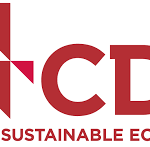
GRESB, the environmental, social and governance (ESG) benchmark for real assets, has released the results for the 2019 GRESB Infrastructure Assessment. Participation has increased again in 2019 as the sector responds to the growing investor demand for standardized and validated ESG data to assess the sustainability of their infrastructure funds and assets.
-
The Infrastructure Fund Assessment grew by 43% to include 107 funds. By fund size, the Assessment covers 33 of IPE Real Asset’s Top 75 Infrastructure Investment Managers – participating with at least one fund.
-
Participation in the Infrastructure Asset Assessment increased by 40% to cover 393 assets. The Assessment now covers 30 of the 33 industry sectors across 57 countries, leading to deep data insights for investors, fund managers and asset operators.
-
The Infrastructure Public Disclosure dataset was launched this year, providing comprehensive coverage of listed infrastructure companies across the GLIO Global Coverage Index. The data reveals which listed infrastructure companies are the most transparent about their ESG performance, which perform in the mid-range and which are lagging their peers.
-
There was a 62% increase in assets participating in the Resilience Module, which is aligned with the recommendations released by the Task Force on Climate-related Financial Disclosures (TCFD). Funds also participated in this module for the first time. The uptick in participation demonstrates an increasing awareness of the need to respond to investor attention on climate risks and resilience.
Results highlights
57% of funds participated in the Assessment with more than 25% of their assets. This enables the funds to obtain the GRESB Fund Score, which is an overall measure of ESG performance at the portfolio level. The average GRESB Fund Score remained level with 2018, at 55 points. The average score decreased in the Asset Assessment, from 47.6 in 2018 to 45.5 in 2019, due to lower scores by newer participants. One in three assets participated for the first time in 2019.
Participation increased across all sectors in the Asset Assessment. The best performing sector, with an average GRESB Asset score of 63.2, is Network Utilities, followed by Data Infrastructure (52.5), Diversified (52.8) and Energy and Water Resources (52.7). Data Infrastructure notably moved up the rankings from 2018. Social infrastructure was again the lowest scoring sector (29.0).
There are clear regional differences in performance. One third of funds are focused on Europe and another third are globally diversified. Europe also has the largest number of participating assets (60%), but the lowest average asset score (42.1). In line with the pattern for the real estate sector, Oceania assets are leading the pack in scoring, with an average of 55.5.
2019 sees the introduction of performance intensity data in asset benchmark reports. Where reported by participants, data on Health & safety, Energy, Greenhouse gas emissions, Water, Waste, Biodiversity & habitat is provided as intensity metrics with comparisons to peers. This is a significant step towards a standardized approach to measuring and scoring assets across different sectors globally. As more sectors provide sufficient observations, these benchmarking possibilities will help fund managers and asset operators of all sectors and regions to better understand and improve their intensity profiles.
“Now in its fourth year, we are delighted that the industry continues to endorse GRESB Infrastructure as demonstrated by sustained growth in participation. Following the proven path of the GRESB Real Estate Assessment, we are becoming the global benchmark. We thank the new and returning participants for their diligence and commitment to reporting and engaging on their ESG performance. While the take-up of GRESB Infrastructure since its launch in 2016 has been positive, this year’s results show that there is still much work to do to scale up reporting and impact,” says Rick Walters, Director Infrastructure at GRESB. “We look forward to supporting our participant and investor members to use this fresh data in engagement with stakeholders and to build on this platform to accelerate the transformation towards sustainable infrastructure. Whilst the global infrastructure and SDG gaps are large and formidable, strong ESG performance is one of the keys to unlocking further infrastructure funding and bridging these gaps.”



